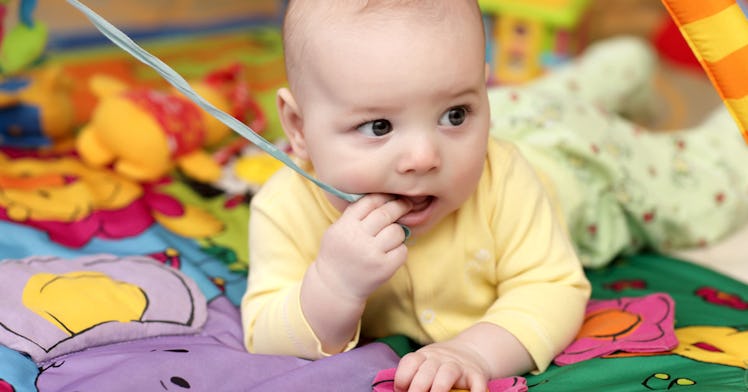These Are The Choking Hazards Threatening American Toddlers
A sharp increase in hospital visits exposes a bizarre trend. Hide your pennies!

Toddlers live like rogue Roombas, swallowing random objects that have the misfortune to fall in their path. It’s no wonder parents of young children spend so much time scouring their homes for potential throat obstructions. With a toddler around, a penny saved can earn a trip to the hospital. Now, thanks to new research from the American Academy of Pediatrics, parents finally know what objects pose the biggest threat. Data suggests that toddlers’ consumption of non-edibles follows some predictable patterns.
“Children in this age group are prone to putting objects in their mouths, enticed by the various colors, shapes, and sizes of the items investigated in this study,” study authors wrote, adding toddlers between the ages of one and two represent a majority of these cases at 61.9 percent. They also found that the number of incidences have increased 92 percent over the past two decades overall — about a 4 percent increase annually.
Using data from the National Electronic Injury Surveillance System, researchers analyzed 29,893 of these accidents that took place between 1995 and 2015. Coins were the most common foreign object kids swallowed. Spare change accounted for 61.7 percent of incidences and 79.7 percent of hospitalizations during the 20-year period. Pennies and quarters were the most ingested coins at 65.9 percent and 16 percent, and kids were twice as likely to be hospitalized for a quarter due to the size. Among other commonly consumed items were toys, jewelry, batteries, nails, screws, tacks, and bolts, and less common hair products, magnets, Christmas decorations, kitchen gadgets, and desk supplies.
The number of kids swallowing small toys increased dramatically up until 2008, when the Consumer Product Safety Improvement Act went into effect. The CPSIA specifically increased pressure on manufacturers to better label products for children under three, and accidents have decreased from there. Although batteries and magnets only represent 6.8 percent and 2.2 percent of cases overall, study authors warn that they present the greatest risk to children because of what they do to their bodies once ingested. When multiple magnets are swallowed they can actually attract across gastrointestinal walls, leading to perforation, necrosis, sepsis, obstruction, and death. Batteries, particularly button batteries found in small electronics like toys, remotes, and thermometers, make up for 85.9 percent of the batteries swallowed are even worse.
“When lodged in the body, the electric current in a button battery rapidly increases the pH of the tissue adjacent to the battery, causing significant tissue injury even within two hours,” the AAP warns. Button battery injuries include esophageal perforation, mediastinitis, vocal cord paralysis, tracheoesophageal fistula, esophageal stricture, or death. In the event of swallowing a button battery, the AAP recommends parents give children over the age of one two spoonfuls of honey before going to the ER, in order to reduce the risk of permanent damage.
Researchers note that in a majority of these cases, most kids in the past 20 years have swallowed pennies and passed them on their own. But given that children appear to be swallowing more junk (and more marijuana) and that the risk of serious injury and death can increase depending on what they eat, it’s all the more important for parents to be aware of the risks.
“Recommendations for prevention of foreign body ingestions by both the AAP and North American Society for Pediatric Gastroenterology, Hepatology and Nutrition include keeping such products out of children’s reach, ensuring that child-resistant packaging is used, and keeping particularly dangerous products off the market.”
This article was originally published on